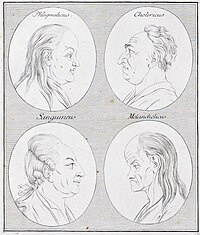Comedy of humours

Comedy of humours is a type of comedy that was popular in the 16th and 17th centuries. It was based on the idea that a person's personality and behavior were influenced by the four bodily fluids, which were known as "humours". These fluids were blood, phlegm, black bile, and yellow bile.
The theory went like this: if a person had too much of one of these fluids, it could affect their behavior and their physical health. For example, if someone had too much phlegm, they might be slow and lethargic. If someone had too much black bile, they might be melancholic and sad.
In comedy of humours, the characters were often exaggerated versions of these personality types. The audience would laugh at their quirks and odd behavior, which was thought to be caused by their dominant humour.
The plots of these comedies often revolved around the characters trying to balance their humours and find happiness. They might visit a doctor or try various remedies to help them feel better. There were also often romantic subplots, with characters trying to find love despite their strange tendencies.
Overall, the comedy of humours was a way to explore human behavior and personality in a fun and entertaining way. It was popular in its time and has influenced comedy ever since.
The theory went like this: if a person had too much of one of these fluids, it could affect their behavior and their physical health. For example, if someone had too much phlegm, they might be slow and lethargic. If someone had too much black bile, they might be melancholic and sad.
In comedy of humours, the characters were often exaggerated versions of these personality types. The audience would laugh at their quirks and odd behavior, which was thought to be caused by their dominant humour.
The plots of these comedies often revolved around the characters trying to balance their humours and find happiness. They might visit a doctor or try various remedies to help them feel better. There were also often romantic subplots, with characters trying to find love despite their strange tendencies.
Overall, the comedy of humours was a way to explore human behavior and personality in a fun and entertaining way. It was popular in its time and has influenced comedy ever since.
